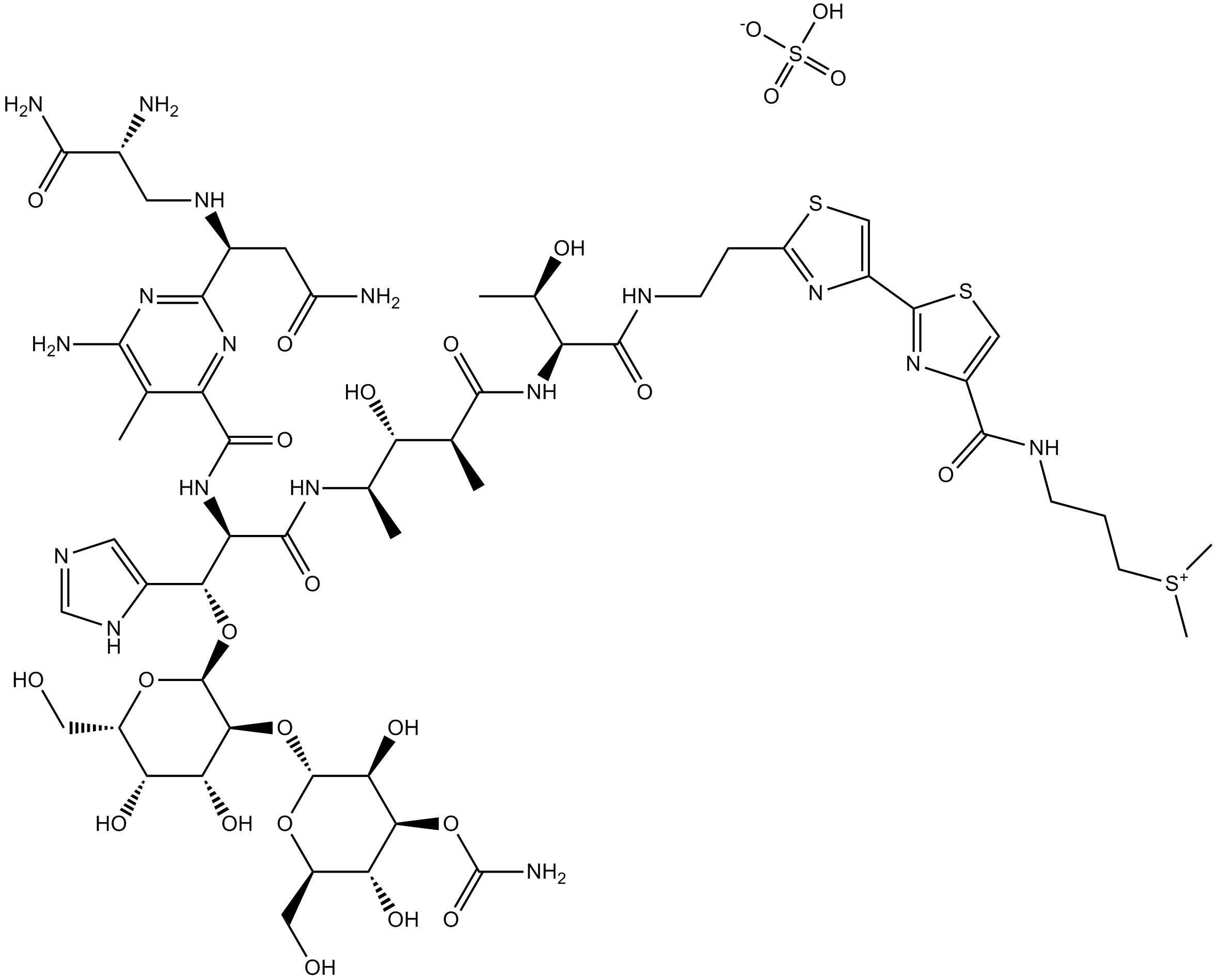Bleomycin Sulfate (Synonyms: Blenoxane;Bleo;Blexane) |
| رقم الكتالوجGC15819 |
يتم إنتاج البليومايسين من قبل Streptomyces verticillis.
Products are for research use only. Not for human use. We do not sell to patients.

Cas No.: 9041-93-4
Sample solution is provided at 25 µL, 10mM.
Bleomycin is produced by Streptomyces verticillis. The Bleomycin molecule has two main structural components; a bithiazole component which partially intercalates into the DNA helix, parting the strands, as well as pyrimidine and imidazole structures, which bind iron and oxygen forming an activated complex capable of releasing damaging oxidants in close proximity to the polynucleotide chains of DNA. This may lead to chain scission or structural modifications leading to release of free bases or their propenal derivatives. It has potent tumor killing properties which have gained it an critical role in cancer chemotherapy. It causes little marrow suppression, but the major adverse is pulmonary toxicity effect.[1]
In vitro, Bleomycin reacts with DNA which has previously been treated with a sulfhydryl compound, and cause a decrease in its melting temperature (Tm). In the reactions in vitro, strand scission in DNA has been confirmed which indicate that in the presence of a sulfhydryl compound in vitro, Bleomycin binds to DNA, and causes single-strand scission. The scission of DNA may be the cause of the inhibition of thymidine incorporation into DNA of growing cells and the inhibition of cell division. [2]
In vivo study demonstrated that Bleomycin-induced pulmonary toxicity and fibrosis could be significantly affected by Soluble epoxide hydrolase (sEH) inhibitors AUDA. In vivo, AUDA significantly improved Bleomycin -induced decline in lung function and body weight, and inhibited inflammatory cell accumulation and the mRNA and protein expression of interleukin (IL)-1β, TGF-β1, and matrix metalloproteinase 9 (MMP-9) in lung tissue. [3]
References:
[1]. John H. et al. Mechanisms of Bleomycin-induced lung damage. Arch Toxicol (1991) 65:81-94.
[2]. Suzuki H, et al. On the mechanism of action of Bleomycin: scission of DNA strands in vitro and in vivo. J Antibiot (Tokyo). 1969 Sep;22(9):446-8.
[3]. Xin-wei D, et al. Soluble epoxide hydrolase inhibitor AUDA decreases Bleomycin-induced pulmonary toxicity in mice by inhibiting the p38/Smad3 pathways. Toxicology 389 (2017) 31–41.
Average Rating: 5 (Based on Reviews and 27 reference(s) in Google Scholar.)
GLPBIO products are for RESEARCH USE ONLY. Please make sure your review or question is research based.
Required fields are marked with *




